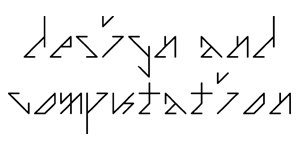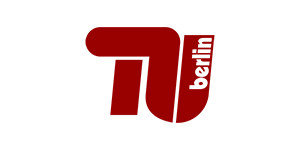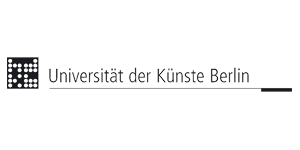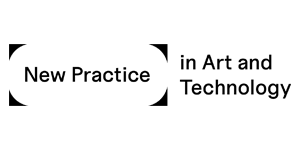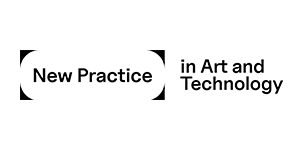Unsere Antwort auf Panik? Bring on the Chaos! Getreu diesem Motto präsentiert die Ausstellung sechs Arbeiten, die sich nicht scheuen, vielschichtige Antworten über verschiedene Medien und Disziplinen hinweg zu geben. Welche gemeinsamen Muster gibt es bei Menschen, Algorithmen und Ameisen? Wie kann Videoanalyse eine Taxonomie global geteilter Polizeitaktiken erstellen? Wie sehen zukünftige Mythen aus? Und wie fühlt es sich an, ein Mensch-in-der-Schleife zu sein? Bring on the Chaos! ist eine Gruppenausstellung des gemeinsamen Masterstudiengangs Design & Computation der Technischen Universität Berlin und der Universität der Künste Berlin. Gezeigt werden Ergebnisse interdisziplinärer Kooperationen der Studierenden an der Schnittstelle von Kunst, Wissenschaft, Gesellschaft und Technologie. Wir glauben an das Potenzial unserer vielfältigen Hintergründe, um die rasanten technologischen und gesellschaftlichen Veränderungen unserer Zeit zu verstehen und aktiv mitzugestalten. Unsere Projekte erkunden daher epistemische und poetische Ansätze, verborgene Muster und mediale Strategien – und entwerfen dabei mögliche Drehbücher für eine Zukunft, in der es sich für uns alle zu leben lohnt.
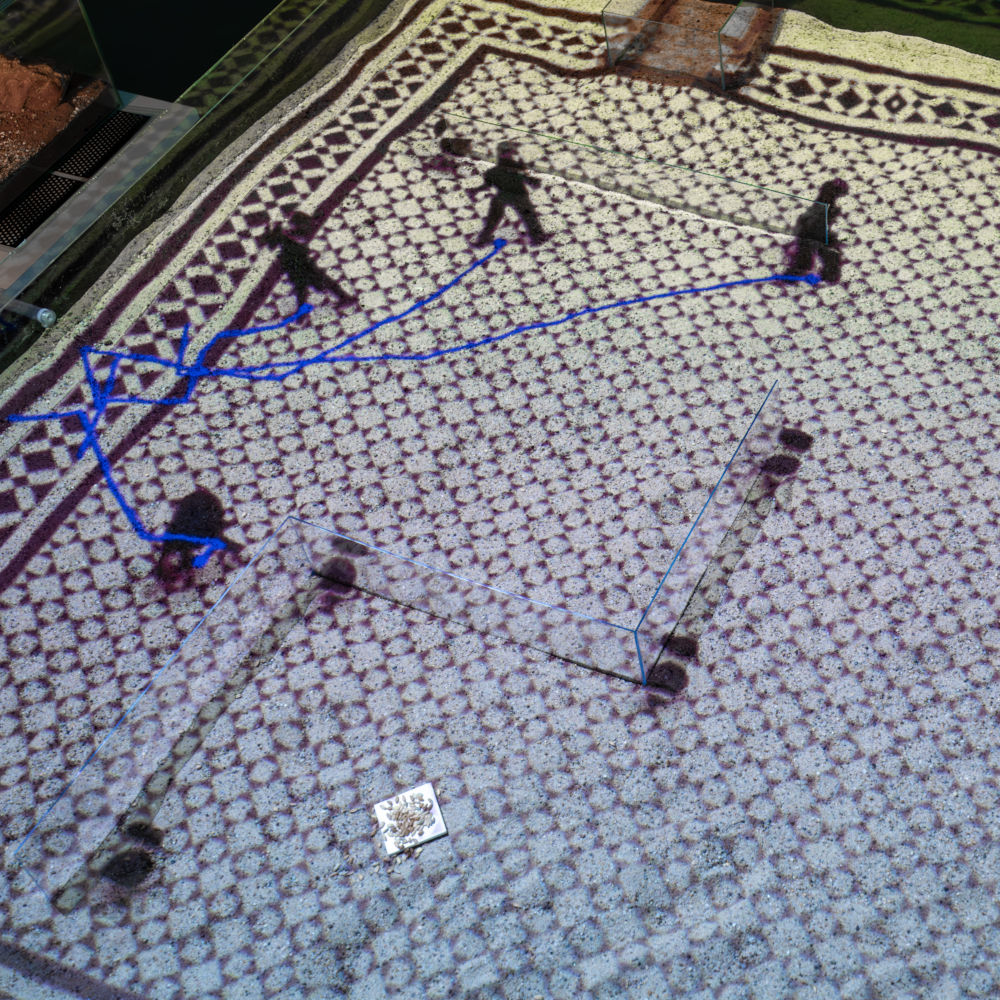
Bring on the Chaos! / MA Design & Computation, Technical University Berlin - Photo: MA Design & Computation
Exhibition
Bring on the Chaos!
MA Design & Computation, Technical University Berlin (DE)
Ticket //
FREE / No Ticket
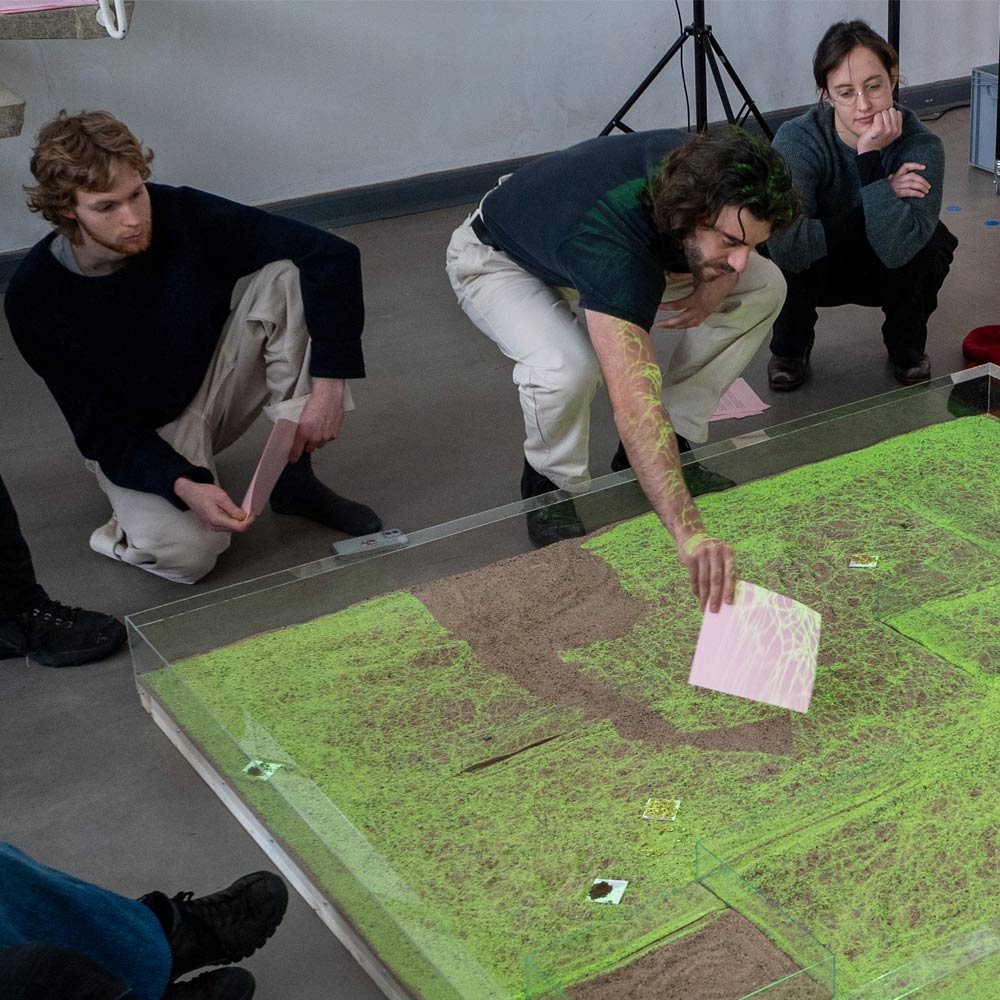
Seed. Potato. Pixel.
Alessandro Mac-Nelly (DE), Lilli-Chiara Kurth (DE), Max Baraitser Smith (GB), Mika Zoé Rosenberg (US)
Seed. Potato. Pixel. is an installation by the Interspecies Research Cluster Berlin that compares three foraging behaviors in identical labyrinths: Harvester ants seeking seeds in a sandbox, blindfolded humans searching for potato piles by touch and sound, and digital ants using the ACO algorithm.
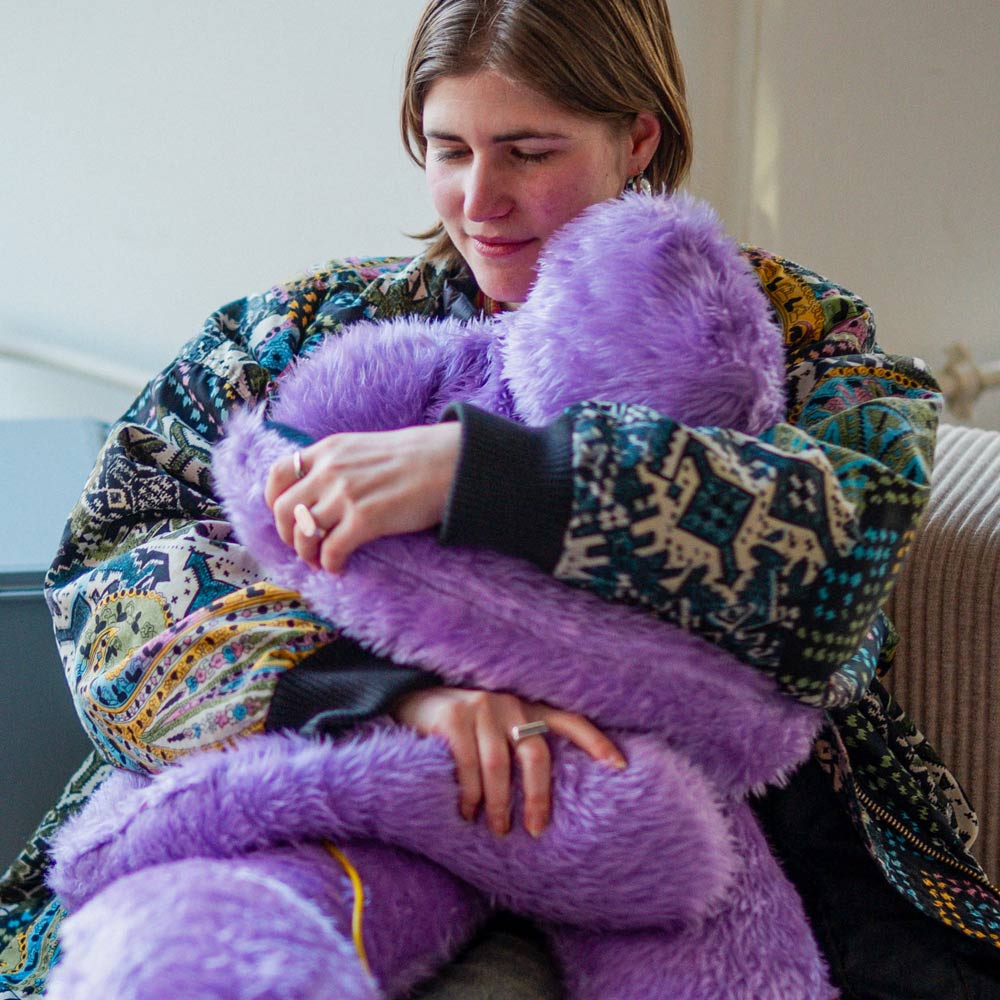
Soft Interface
Lilu Herlambang (ID), Franz Hagen (DE), Hong Anh Pham (DE), Chia-Chi Chen (TW)
Soft Interface imagines technology becoming soft, warm, and alive. Screens melt into fabrics, keyboards transform into tactile textiles, devices respond to human touch.

Bosonic Echoes
Emma Sokoll (GB)
Bosonic Echoes is an interactive light and sound installation that explores the creative potential of boson sampling in generative music. Boson sampling is a type of quantum computation using photons that addresses a specific problem believed to be infeasible for classical computers.
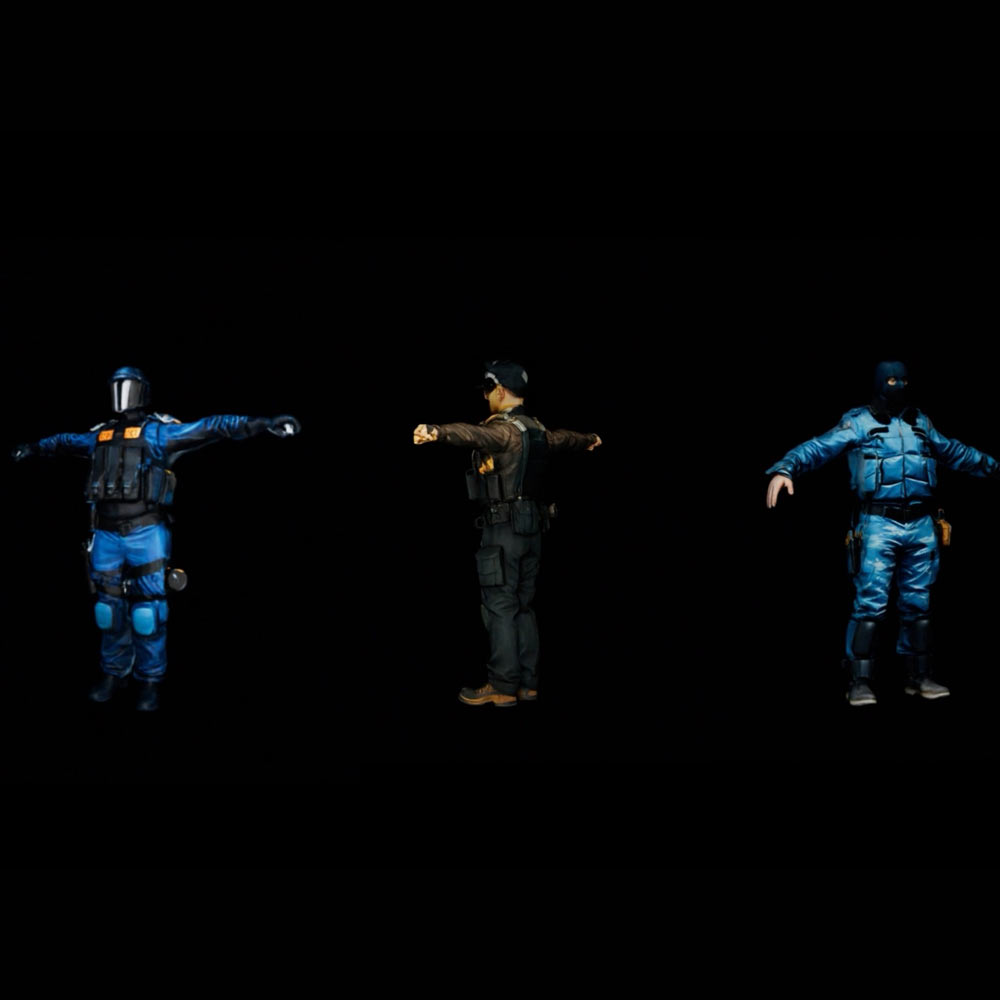
Operational Choreography
Natalya Bashnyak (UA), Harun Ćurak (BA), Otto Ostermann (DE)
Polizeikräfte aus unterschiedlichen sozio-geografischen Kontexten treten in überlappenden Netzwerken zusammen, um sich über Durchsetzungsstrategien auszutauschen. Diese Kooperationen bleiben häufig unbemerkt, und die dort zirkulierenden Inhalte sind schwer nachzuvollziehen.
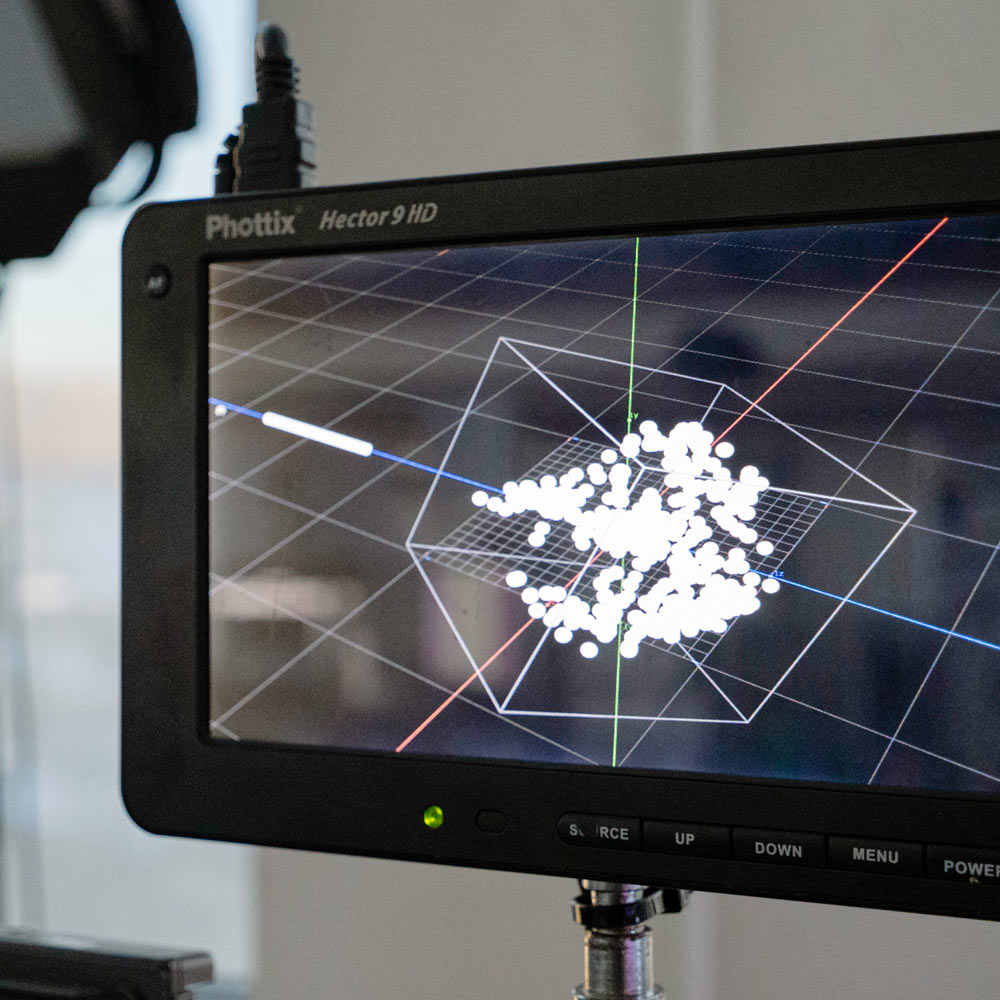
Cultural Computations: Myths & Swag
Eman Safavi Bayat (IR), Suzan Ela Hanow (GE/TR), Lilli-Chiara Kurth (DE), Célestin Meunier (FR), Pierre-Louis Suckrow (DE/FR)
Cultural Computations: Myths & Swag investigates through two case studies and interactive exhibition pieces how evolving cultural patterns can be studied through algorithmic simulation (Mythologizer) and are latently embedded into current AI models (SWAG).
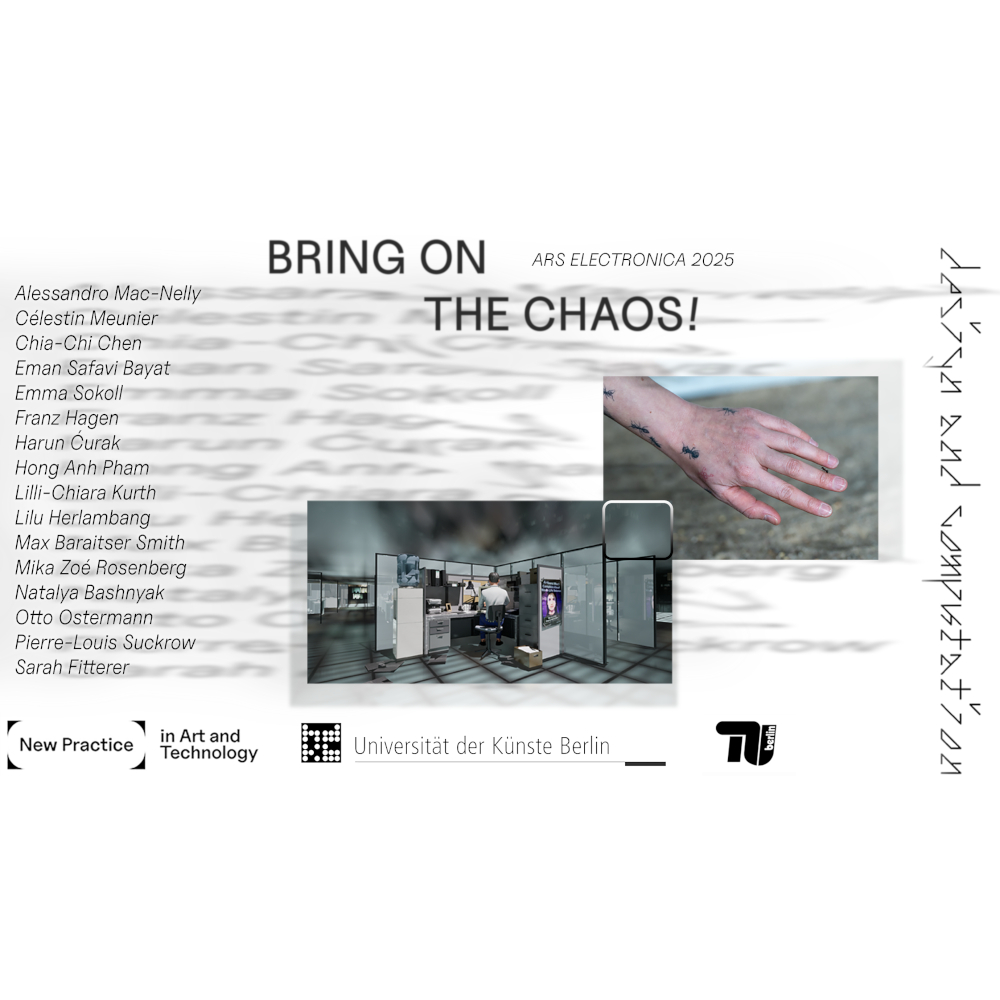
MEET THE ARTIST: Bring on the Chaos!
MA Design and Computation, University of Arts Linz (AT)
Join our guided tour of Bring on the Chaos! for a close-up look at seven interdisciplinary works that rethink patterns, power, and possibility.
-
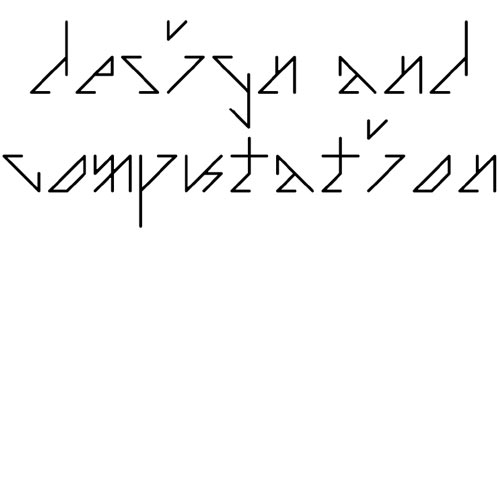
MA Design & Computation, Technical University Berlin
Mit dem neuen gemeinsamen Masterprogramm Design & Computation reagieren die Universität der Künste Berlin und die Technische Universität Berlin auf den schnellen sozialen und technologischen Wandel und eine immer dynamischere akademische Kultur. Durch das Programm arbeiten beide Universitäten interdisziplinär an der gemeinsamen Entwicklung neuer Lehr- und Forschungsformate. Studierende, Lehrende und Forschende haben dadurch Zugang zu einem umfangreichen Angebot an Forschungs- und Bildungsmöglichkeiten beider Universitäten.
